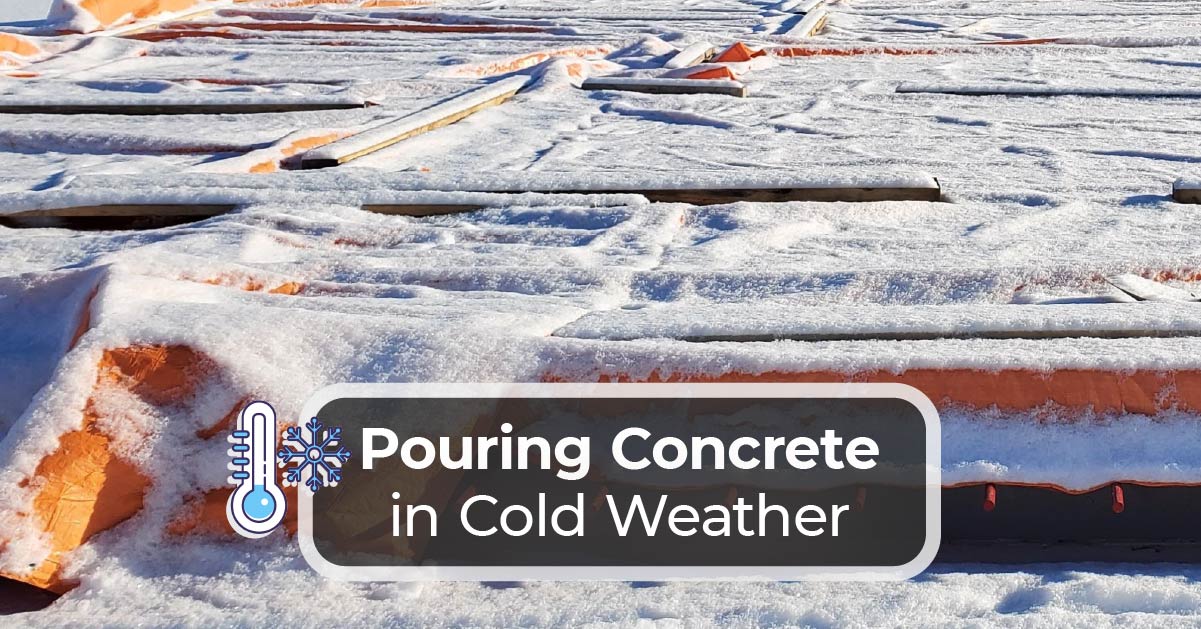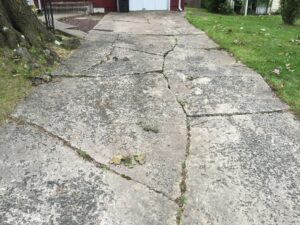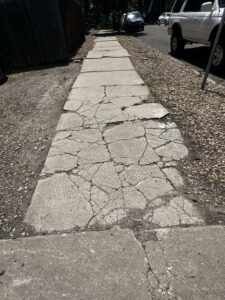Winter weather can be a challenging time for construction projects, especially when it comes to pouring concrete in Denver and the surrounding areas of Colorado. Cold temperatures can affect the curing process, leading to weaker, less durable concrete. But with the help of a reputable concrete contractor or a professional Denver concrete expert, proper preparation is possible, making it possible to pour concrete successfully in the winter months.
One of the key considerations when pouring concrete in the winter is temperature control. Concrete needs to be kept at a consistent temperature of at least 50°F in order to cure properly. This is where concrete blankets come in handy.
How Do Concrete Blankets Work Against the Cold?
Concrete blankets, also known as insulation blankets, are designed to keep concrete warm and protected from the cold during the curing process. They are made from a layer of insulation material, usually polystyrene, sandwiched between two layers of plastic or foil. When placed over the freshly poured concrete, the concrete blanket helps to maintain a consistent temperature, allowing the concrete to cure properly. The insulation material traps the heat generated by the hydration reaction of the concrete, and the plastic or foil outer layers help to prevent heat loss.
What’s the Coldest Temperature Outside, I Can Pour Concrete While Using Blankets?
A professional Denver concrete contractor or Colorado concrete expert will tell you that the coldest temperature outside to pour concrete while using blankets is typically around 20°F. While concrete blankets help maintain a consistent temperature, extremely low temperatures can still cause problems with the curing process. If the temperature is expected to fall below 20°F, it’s best to delay the pour until conditions improve.
What Happens if I Don’t Blanket the Concrete?
If you don’t blanket concrete that is poured in cold weather, there is a risk that the surface will freeze before the concrete has a chance to cure properly. This can cause cracking, scaling, and other surface defects that weaken the structure of the concrete.
In addition to these surface issues, concrete that is poured in cold weather without adequate protection may also have a lower overall strength, making it less durable and more prone to cracking over time.
In addition to helping to maintain the proper curing temperature, concrete blankets also provide protection from wind, rain, and snow, which can cause the surface of the concrete to dry too quickly and lead to cracking and other issues.
Is There Any Way to Fix Damaged Concrete from Cold Weather?
If concrete is damaged as a result of cold weather conditions, there are a few steps that can be taken to repair it. These may include:
- Surface repairs: If the concrete has surface cracks or other cosmetic damage, it may be possible to repair it with a concrete resurfacer.
- Structural repairs: If the concrete has suffered significant damage to its structure, it may be necessary to remove and replace the damaged sections.
- Sealing and protection: Applying a concrete sealer can help to protect the surface of the concrete and prevent further damage from occurring.
It’s important to consult with a professional concrete contractor if you suspect that your concrete has been damaged by cold weather. They can assess the damage and recommend the best course of action for repairs.
What Does Cold Weather Effected Concrete Look Like?
Cold weather affected concrete may have a number of different visual indicators, depending on the severity of the damage. Some common signs of cold weather damage include:
- Surface cracks: Concrete that has been affected by cold weather may have fine, spidery cracks on its surface.
- Scaling: Cold weather can cause the surface of the concrete to flake and peel away, leaving a rough, scaly texture.
- Discoloration: Concrete that has been affected by cold weather may also have discolored patches, typically a light gray or white color.
- Poor overall appearance: Concrete that has been damaged by cold weather may also have a dull, lackluster appearance compared to concrete that has cured properly.
If you notice any of these signs, it’s important to assess the damage and take steps to repair it in order to maintain the strength and durability of your concrete.
So, if you’re planning to pour concrete in the winter, using concrete blankets is an essential step to ensure the success of your project. Just be sure to follow the manufacturer’s guidelines for using the blankets and consult with a professional if you have any questions or concerns.
In conclusion, pouring concrete in the winter is possible with proper preparation and the use of concrete blankets. With these tools, you can ensure that your concrete cures properly and is strong, durable, and ready for use.




